Glaucoma Treatment in Abilene, Eastland & Stamford, TX

People often refer to glaucoma as the “silent thief of sight” because it can cause significant vision loss without noticeable symptoms as it progresses slowly.
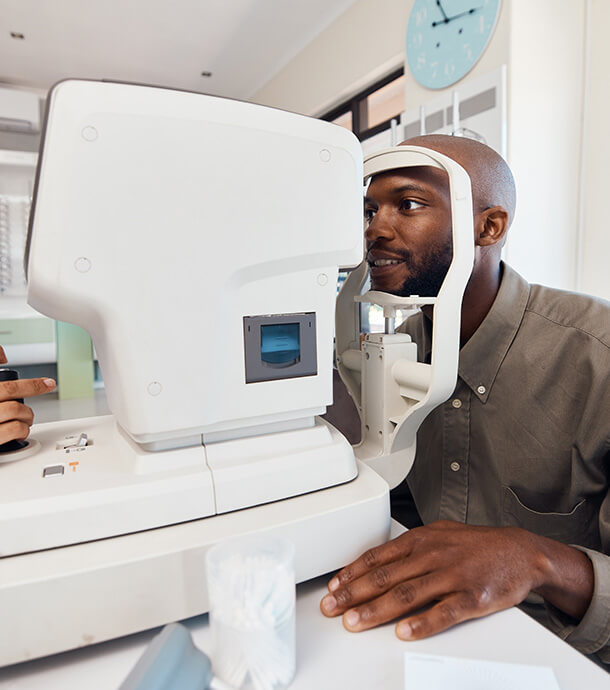
Proactive Glaucoma Screenings and Care

Glaucoma can subtly impact your life by gradually narrowing your field of vision, often without any clear symptoms until the disease is quite advanced. Regular screenings are essential for early detection and intervention.
At Advanced Eyecare & Vintage Eyewear, we offer comprehensive screenings and glaucoma treatment. We use the latest technology to measure intraocular pressure and assess the health of the optic nerve. Our team is here to guide you through the diagnosis process, provide personalized management plans, and offer ongoing support to safeguard your vision.
What Is Glaucoma?
High intraocular pressure (IOP) in the eye can often cause damage to the optic nerve, which is essential for good vision. This damage is a characteristic of glaucoma, a group of eye diseases that can lead to permanent vision loss.
Glaucoma initially causes peripheral (side) vision loss and can progress to a reduction in central vision, eventually leading to blindness if not treated effectively. The vision loss from glaucoma is permanent, making early detection and treatment crucial.


A Closer Look at The Types of Glaucoma
Open-Angle Glaucoma:
The most common form. In this form, the eye does not drain fluid as well as it should, leading to a gradual build-up of IOP. It develops slowly and is a lifelong condition.
Angle-Closure Glaucoma:
This type occurs when the iris is very close to the drainage angle in the eye and ends up blocking it. This can cause a sudden increase in IOP and is considered a medical emergency.
Secondary Glaucoma:
is caused by another disease or condition that affects the eye’s pressure, such as inflammation, injury, or advanced cataract.
Congenital Glaucoma:
This rare type is present at birth and results from an abnormal development of the eye’s drainage system.
Recognizing Glaucoma Symptoms
Glaucoma symptoms can vary depending on the type. Open-angle glaucoma typically does not show any noticeable symptoms. As it advances, it leads to blind spots in peripheral vision. In contrast, an episode of angle-closure glaucoma is more abrupt and can include:







What Increase Your Risk of Glaucoma?

Because glaucoma can progress without noticeable symptoms, those with risk factors need to have regular comprehensive eye exams. Here are some key factors that might increase the likelihood of developing glaucoma:










Our Cutting-Edge Glaucoma Diagnostics
Advanced Eyecare & Vintage Eyewear employs sophisticated technologies to screen for glaucoma and monitor its progression, ensuring we provide the most accurate and comprehensive care possible for our patients.
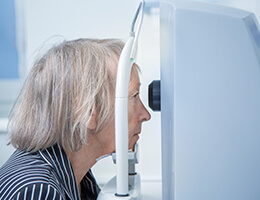
Optical Coherence Tomography (OCT):
This non-invasive imaging test uses light waves to take cross-section pictures of your retina, allowing us to visualize the different retina layers and measure their thickness.
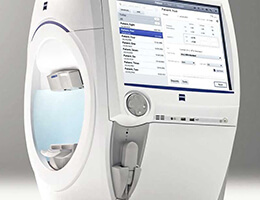
Humphrey Visual Field Analyzer:
It performs a visual field test that maps the full range of vision to detect any blind spots or areas of diminished sight. These areas may indicate early damage to the optic nerve caused by glaucoma.
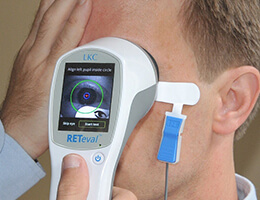
Electroretinogram (ERG):
This test measures the electrical responses of various cell types in the retina to detect any dysfunction or damage that might not yet be apparent in visual field tests.
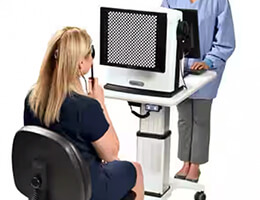
Visual Evoked Potential (VEP):
This test measures the electrical activity in the visual cortex in response to visual stimuli. VEP can help evaluate how damage to the optic nerve from increased IOP affects the brain’s visual information processing.
Trust Our Glaucoma Specialists to Protect Your Vision

Our Texas clinics have assembled a dedicated team of glaucoma specialists committed to safeguarding your vision. Whether you are at risk for glaucoma or have already been diagnosed with this condition, our experts have the knowledge, skills, and tools to provide you with the best possible care.
Expertise and Experience:
Our specialists are highly trained in glaucoma and stay abreast of the latest research and advancements in treatment to ensure you receive the most effective care.
Advanced Diagnostic Tools:
We utilize state-of-the-art diagnostic technology to accurately assess and monitor your eyes, allowing for early glaucoma detection and management.
Personalized Treatment Plans:
We tailor our glaucoma treatments to each patient. Whether through medication, laser treatment, or surgery, we aim to provide personalized care.
